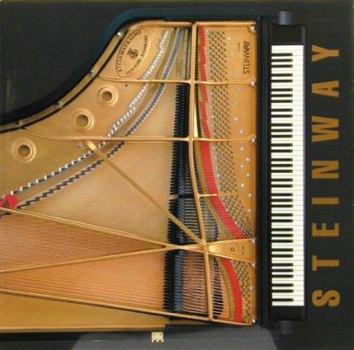Steinway
This lavishly illustrated book tells the remarkable story of the Steinway company and its founding family. Heinrich Steinweg emigrated to America at the age of fifty-three with his large and talented... This description may be from another edition of this product.
Format:Hardcover
Language:English
ISBN:0877015929
ISBN13:9780877015925
Release Date:January 1989
Publisher:Chronicle Books (CA)
Length:204 Pages
Weight:0.10 lbs.
Dimensions:1.1" x 10.3" x 10.3"
Customer Reviews
3 ratings
Steinway: The American company that changed the music world
Published by Thriftbooks.com User , 19 years ago
This is an amazing book about an amazing company. I had always thought that Steinway was a German company with an American factory. The first line of Henry Z. Steinway's foreward lays that myth to rest: "The piano is an American invention. Historians of the piano traditionally start with Cristofori in Italy in the late seventeenth century, proceed to the eighteenth-century Vienna known to Mozart and Beethoven, and to London where in the early nineteenth century the first factories produced pianos in quantity. But in America, Iron entered the piano. The cast-iron frame was developed here, and by the middle of the nineteenth century the piano as we still know it was built by Americans." The book goes on to tell how the company's founder received an honor for bugling in battle at Napoleon's defeat at Waterloo, how some piano makers named Steinway opened the first Mercedes dealership in the US... before there were any roads for automobiles, how luminaries like Wagner, Liszt, Berlioz, Rubinstein, and Rachmaninoff raved about this instrument that was like no other, and--of course--how a family of German immigrants changed the face of music, and the piano in particular, by moving to America where they had the opportunity to do so. If you think a piano is a complex device, and it is, then you'll be amazed at the world's best piano's factory. The piano itself could be metaphorical for the entire factory. The instrument is wood and iron, ivory and felt. It's got 70,000 lbs. of tension stretched across tolerances so fine that the musicians can feel a difference of a couple of grams, or a millimeter variance. At one end of the factory you'll find logs floated in to be milled into piano materials, and iron to be cast in the foundery. At the other end you find bow ties and spats and painted fineries. The piano is full of such dichotomies. The Steinway family itself, though, seems very focused and adapted to its calling. It's almost miraculous that it happened at all. Perhaps America can take a bow for creating the opportunity that brought Europe knocking at Steinway Hall for a chance to play the finest instruments, and to compose music that suited it. Had it happened 50 years later, much of the repertoire we know would not be here. I was fascinated with the "perfect instrument:" a Steinway with no keyboard. No room for human error. It was a player piano -- an early home entertianment center. An instrument that brought the music to you. Think of it as an early iPod. ;^) But if there had been no stories at all, no text, I would have bought this book even for the pictures. Educational in places, sheer indulgence and delight in others. This is a beautiful book. Shooshie
Excellent read for Steinway enthusiasts
Published by Thriftbooks.com User , 22 years ago
This is a wonderfully illustrated book presenting the whole history of the Steinway company from it's start in New York untill today. The text in historically insteresting, and the book uncludes a large number of excellent illustrations. There are pictures of many Steinway models, various historical photos of the NY stores and factory, art case pianos galore, old advertisements, and more. The history of the piano is tied closely to this company. And don't forget, it was first and foremost the piano that introduced music to the general public (before the age of the gramaphone and the CD).
One Example Of A Classic
Published by Thriftbooks.com User , 23 years ago
What kind of "classics" do I love is a question I sometimes receive. The name was always primarily for my love of books, however it extends to many classes of design, architecture, music in many forms, and Frank Sinatra is particular. An additional example would be the Steinway Piano and the history of the Family who created it.Unfortunately the cover of this book is not shown, for it also appears in poster form depicting the interior of Steinway Concert Grand. And even if it were not used by 95% of concert pianists, even if it did not create one sound, the design alone is gorgeous to gaze upon.I do not play, and my knowledge of pianos does not extend very far past this book. But the work is so well done, neither do other readers of this book need to play or be technically inclined. The book does contain technical information that will be of interest to some more than others, but for anyone who enjoys History, the book is wonderful. And even if you are not technically inclined, many of the facts that document who and what is required to create just one of these instruments, is something that will fascinate any inquisitive reader.





